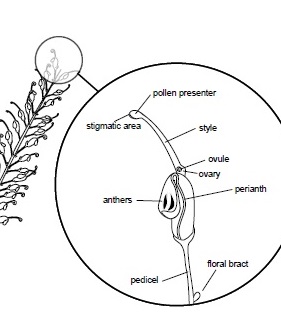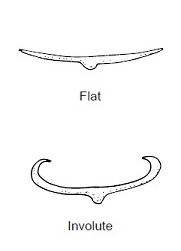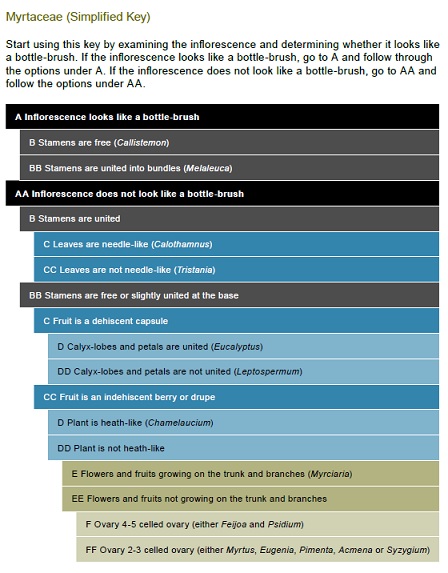Sneak Peek
Plant Taxonomy (i.e. the scientific identification of plants) has been increasingly sidelined and neglected in horticulture, agriculture, botany and science courses. This short course is a great way to become proficient in understanding the essentials in plant taxonomy.
To the ill-informed, it is a low priority for gardeners, environmentalists or farmers to identify obscure parts of a plant; or place plants into a high level scientific classification such as a family or class. For anyone who understands these industries well however, it can be critical to have that knowledge. Taxonomy trains people to observe the finer details that separate one plant cultivar from another. It provides a framework that makes the process of identifying plants systemic.
This course will help you to identify what a plant is faster and with greater accuracy than would otherwise be possible.
Leading horticulturists and botanists all over the world are all too aware of a serious decline in taxonomic skills and awareness.
Anyone who works with plants needs to understand how critical plant taxonomy is.
Without this level of taxonomic knowledge, you risk misidentifying plants. That can mean growing a less productive species; or even worse - growing a plant with higher levels of toxins and being unaware you are doing so.
WATCH THIS FOR AN INTRODUCTION
WHAT THE COURSE COVERS
Four lessons as follows:
Lesson 1: INTRODUCTION - The Why and How of Plant Names
This lesson covers: Why Name Plants?, Scientific Vs. Vernacular Names, History, John Ray, Linnaeus, Ranks and Language, Ranks of Classification - KPCOFGS, Latin Names, Gardener’s Ranks, International Code of Botanical Nomenclature, Valid publication, The type method, Principle of priority aims and exceptions, Legitimate Naming, Recent Changes to the Code, International Code of Nomenclature for Cultivated Plants, Taxonomic Name Resolution Service, International Plant Names Index, The Rise of Molecular Data and the Impact of Molecular Data

Lesson 2: NAMING THE BITS - Plant Anatomy
This lesson covers: Describing a Plant for the First Time, Habit, Stems, Hairs, Flowers, Botanical Characteristics of Dianthus, Fruits, Indehiscent, Schizocarpic, Dehiscent, A Key to the Main Types of Fruits and Roots
Lesson 3: IDENTIFICATION TOOLS
This lesson covers: Using Resources, Collecting and Preserving Plants, Fresh Material, Herbarium Specimens, Photographs, The Problem of Colour, The Law Relating to Plant Collecting, Describing a Plant on Paper, The Equipment You Need, DNA Bar-coding, Floral Formulae, Floral Diagrams, Plant Keys, Making a Key, Using a Key, When all this fails, what do you do?, Botanic Gardens and Nurseries
Lesson 4: PLANT FAMILIES - The Family Life of Plants
This lesson covers: What Genera are in What Family?, Monocotyledons, Dicotyledons, Major Families, Anthophyta, Apiaceae (= Umbelliferae), Araceae, Asteraceae (= Compositae), Brassicaceae (= Crucifereae), Bromeliaceae, Cucurbitaceae, Fabaceae (= Leguminosae or Papillionaceae), Gesneriaceae, Lamiaceae (= Labiatae), Liliaceae, Myrtaceae, Orchidaceae, Poaceae (= Graminae), Other Significant Plant Phyla, Coniferophyta and Monilophyta

LEARN ABOUT THE DIFFERENT WAYS OF IDENTIFYING PLANTS
Accurate scientific plant identification has traditionally been determined by scientific examination of the plant.
This course shows you how this has been done, different ways, using different tools.
Traditionally the way to do this has been by studying the plant's anatomy; but increasingly it is also done today using genetic analysis.
 Anatomical-Based Classification
Anatomical-Based Classification
This course is focused mostly on this traditional way of identifying plants; largely because it is more readily used without needing specialised knowledge or equipment.
It involves closely examining a plant with a hand lens to determine its physical characteristics such as flower structure (e.g. number of petals, inferior or superior ovary etc.), shape of leaves, arrangement of leaves on a stem, the presence or absence of hairs, and so forth.
Genetic Analysis
This is a relatively new method of identification. DNA sequencing is having an impact upon plant taxonomy. Some plants which were previously classified as closely related using traditional anatomical comparisons have been found to be less closely related using DNA comparisons.
With the correct equipment and data, it is also possible to use DNA sequencing to identify plant species. This is achieved using a technique called 'DNA bar-coding'. For this to work there must be a special stretch of DNA present in every plant in the world. The sequence of this stretch of DNA must vary greatly between species but not vary between the individuals in the same species. Finding this bit of DNA has been elusive for plants and is actually much easier for animals. However, for some groups such as the orchid Paphiopedilum it has been achieved. This means that species and varieties of “Paphs” can be identified by customs officials even when the plants are not in flower – something that was impossible before.
So far, the only country to have successfully DNA bar-coded its entire flora is Wales. For many plants, identification by DNA bar-coding is still a very long way off and so, for now at least, the tried and tested technique of hand lens and anatomical description plus identification keys is here to stay!

HOW LONG TO COMPLETE THIS COURSE?
20 hours; self paced; take a few days or spread it over weeks or months - whatever suits you.
WHAT SUPPORT IS AVAILABLE?
As much or little as you need, from qualified botanists/horticulturists on our help desks in both Australia and the UK
WHO SHOULD STUDY THIS COURSE?
What you learn in this course are fundamental, underpinning skills for anyone working in gardening, horticulture, environmental management or farming. If you are working with plants, it is critical to know exactly what plant you are working with. If you get that wrong you can easily use a toxic plant instead of an edible, confuse weeds with valuable plants, or grow less productive plants instead of more productive ones.
Many college and university courses around the world have ignorantly removed plant taxonomy from their courses - even university degrees!
This is your chance to correct that deficiency in your own education!

FEATURES
- 20-hour, self-paced course
- Fully online
- Optional practical set tasks throughout
- Automated self assessment tests
- "Certificate of Completion" on achieving a 60% pass rate on a final assessment
How does this course work?
You can enrol at any time
Once you have paid for the course, you will be able to start straight away.
Study when and where you like. Work through at your own pace.
You can download your study-guide to your smart phone, tablet or laptop to read offline.
There are automated self-assessment tests you can complete at the end of each lesson. You can attempt these as many times as you wish and each time, upon completion, you can see your results. You will need internet access to complete the self assessment tests.
At the end of the course, you are presented with a large assessment which can be attempted online, anywhere, anytime. If you achieve a 60% pass in the exam; you immediately receive a downloadable certificate of completion with your name on it. If you do not achieve a 60% pass rate, you can contact us to re-sit your exam. ( email- admin@acs.edu.au )
Contact us at anytime if you have any issues with the course. admin@acs.edu.au